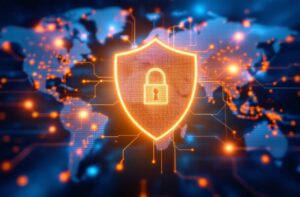Dota 2, a revered title in the realm of eSports, has captivated millions of players worldwide with its intricate gameplay and thrilling strategic depth. As a multiplayer online battle arena (MOBA) game, it boasts a unique mix of teamwork, skill, and tactical prowess, making it a standout in competitive gaming. Its popularity continues to soar, fueled by major tournaments like The International, where top teams from around the globe vie for glory and substantial prize pools.
Mastering different heroes is crucial in Dota 2, as it enhances your versatility and adaptability. Each hero offers a distinct set of abilities and potential team contributions, and understanding these can significantly impact the outcome of your matches. Consequently, becoming proficient with a variety of heroes equips you to handle any in-game situation and synergize effectively with your teammates.
The purpose of this guide is to provide you with comprehensive strategies and insights to dominate every hero in Dota 2. Whether you’re a novice seeking foundational tips or an experienced player aiming to refine advanced techniques, this guide will support your journey toward mastering the game. Let’s embark on this quest to sharpen your skills and elevate your Dota 2 prowess together.
Understanding the Basics
Explanation of Hero Roles
In Dota 2, understanding the roles of heroes is paramount to achieving victory. Each role has distinct responsibilities and contributes differently to the team’s success.
- Carry: Carries are typically heroes who start off weaker and gain strength as the game progresses. Their primary aim is to farm and acquire items that boost their damage output, enabling them to carry the team to victory in the late game. Examples include Phantom Assassin and Juggernaut.
- Support: Support heroes focus on aiding their team through healing, disrupting enemies, and providing vision. They are crucial in the early game for establishing control and protecting the carry while ensuring the team has resources like wards. Crystal Maiden and Witch Doctor are classic supports.
- Mid: The mid lane hero is generally expected to be versatile and capable of solo play. Their role often includes securing farm and levels quickly, ganking other lanes, and applying map pressure. Mid heroes like Invoker and Storm Spirit can turn the tide of the game with their powerful abilities.
- Offlane: Offlane heroes are often tanky or hard to kill, designed to withstand adverse conditions and disrupt the enemy’s plans. They focus on gaining experience and applying pressure on the opponent’s safe lane. Tidehunter and Bristleback are examples of offlane heroes.
- Roaming: Roaming heroes move around the map to apply pressure, set up kills, and provide map control. They are crucial in dictating the pace of the game and supporting other lanes. Heroes like Earth Spirit and Bounty Hunter excel in this roaming role.
Introduction to Game Mechanics
Mastering the mechanics of Dota 2 is essential for any aspiring player. Key mechanics include:
- Last Hitting: Securing the final hit on creeps to earn gold, which is crucial for item progression. Practicing last hitting under various conditions ensures a steady income during the game.
- Warding: Placing observer wards provides your team with vision, revealing enemy movements and preventing ganks. Sentry wards are used to counteract the enemy’s vision and detect invisible units.
- Map Control: Maintaining control of key areas on the map is vital for denying resources to your opponents while securing objectives like Roshan and towers.
Basic Strategies for Early, Mid, and Late Game
To succeed in Dota 2, adapting your strategy according to the different game phases is crucial:
- Early Game: Focus on securing lanes, farming for essential items, and establishing map control with wards. Coordinate with your team for early ganks to disrupt the enemy’s farm and gain an advantage.
- Mid Game: This phase revolves around team fights, taking objectives such as towers, and maintaining map control. Ensure your carry has the space needed to continue farming while supporting them in team engagements with coordinated efforts.
- Late Game: Key decisions and team fights in the late game often determine the outcome. Prioritize high-value targets, ensure buybacks are available for critical heroes, and push the enemy’s base when an opportunity arises. Coordinated attacks and solid defensive strategies become pivotal during this stage.
By understanding these fundamental components, you’ll be well-equipped to contribute effectively to your team’s efforts and improve your overall gameplay in Dota 2.
Hero Attributes and Abilities
Overview of Hero Attributes
In Dota 2, each hero is defined by three primary attributes: Strength, Agility, and Intelligence. These attributes influence various aspects of gameplay and are essential for understanding how each hero operates on the battlefield.
- Strength: Strength heroes are known for their durability and high health pools. Each point in Strength increases a hero’s maximum health and health regeneration. Strength-based heroes such as Axe and Centaur Warrunner often take on tanking roles or frontline initiators due to their ability to absorb damage and disrupt enemies.
- Agility: Agility heroes are typically damage dealers who rely on attack speed and armor. Each point in Agility boosts a hero’s attack speed and armor, making them effective in dealing sustained damage while being slightly harder to kill. Heroes like Anti-Mage and Drow Ranger are examples of Agility heroes who excel at dishing out high physical damage quickly.
- Intelligence: Intelligence heroes specialize in using abilities and spells, benefiting from a larger mana pool and faster mana regeneration. Each point in Intelligence increases a hero’s maximum mana and mana regeneration rate. Many Intelligence heroes, such as Lina and Puck, fulfill roles that require heavy spell usage, crowd control, or supporting their team with buffs and heals.
How Attributes Affect Gameplay
These attributes are not only indicative of the hero’s primary role but also significantly influence their playstyle and the items they prioritize:
- Strength Heroes: Often at the forefront of battles, absorbing damage for the team. They focus on tank items and skills that enhance their survivability.
- Agility Heroes: Act as primary damage dealers with a focus on items that increase their attack speed, damage, and agility, making them formidable in one-on-one combat or against groups.
- Intelligence Heroes: Typically focus on maintaining a high mana pool and regeneration to sustain their spell casting. They prioritize items that offer utility, magical damage, and crowd control abilities.
Breakdown of Different Types of Abilities
Heroes in Dota 2 possess a variety of abilities that define their roles and impact in the game. These abilities can be categorized into three main types: Active, Passive, and Ultimate.
- Active Abilities: These are the spells and skills that heroes can activate to perform specific actions. They often have cooldown periods and cost mana. Examples include Invoker’s Sun Strike, which deals damage to an area, and Witch Doctor’s Paralyzing Cask, which stuns enemies.
- Passive Abilities: Passive abilities provide heroes with continuous effects that do not require activation or mana. They are always ‘on’ and can significantly enhance a hero’s performance. For instance, Weaver’s Geminate Attack allows him to occasionally shoot multiple attacks with one click, and Anti-Mage’s Mana Break burns an opponent’s mana on each attack.
- Ultimate Abilities: Ultimate abilities are often the most powerful skills a hero possesses, providing a significant impact on the game. They have longer cooldowns and higher mana costs compared to other abilities. Examples include Earthshaker’s Echo Slam, which deals massive area damage, and Enigma’s Black Hole, which controls and damages enemies caught within its radius.
By understanding hero attributes and the different types of abilities, you’ll be better equipped to choose the right hero for your team’s needs and make strategic decisions that leverage their strengths effectively in various game scenarios.
Selecting the Right Hero
Tips for Choosing Heroes Based on Team Composition
When selecting a hero, it’s crucial to consider your team’s composition to ensure a balanced and effective lineup. Here are some tips:
- Roles and Balance: A well-rounded team typically consists of a mix of roles such as carry, support, initiator, and tank. Ensure your team covers these roles to maintain flexibility and strength in various situations.
- Synergy: Choose heroes that have abilities complementing your teammates. For instance, combining a hero with strong crowd control with another that deals high area damage can lead to devastating team fights.
- Resource Distribution: Make sure there is a balance in gold and experience distribution. Having multiple carriers can starve your team of necessary resources, so ensure there’s a balance between cores and supports.
Analyzing the Enemy Team to Counter-Pick Effectively
Counter-picking is a strategic process that involves selecting heroes specifically to counter the enemy team’s lineup:
- Identify Key Threats: Determine the primary threats on the enemy team and their win conditions. If they have strong spellcasters, consider picking heroes with silences or spell-blocking abilities.
- Diminish Strengths: Choose heroes that can exploit the weaknesses of the enemy’s picks. For example, if the enemy team relies heavily on a fragile carry, picking heroes with high burst damage can neutralize that threat effectively.
- Flexibility: Consider selecting versatile heroes that can adapt to multiple roles or lanes depending on how the enemy composes their lineup.
Adapting Hero Selection to Different Game Phases
Fitting your hero selection to the game’s various phases can make a significant difference in performance:
- Early Game: Look for heroes who are strong in the laning phase and can establish early pressure. Heroes with powerful level 1-3 abilities or strong harass can dominate lanes and secure advantages.
- Mid Game: Focus on heroes who can contribute significantly to team fights and skirmishes. Abilities that provide initiation, crowd control, and survivability are valuable during this phase.
- Late Game: Ensure your team has a strong late-game presence by picking heroes who scale well with items and can outlast opponents in prolonged encounters. Hard carries or heroes with impactful ultimates can be game-changers as the game progresses.
By considering these factors and strategies, you’ll enhance your hero selection process, contributing effectively to your team’s success and adapting dynamically to the evolving game state.
Mastering Individual Heroes
In-depth Guides for Popular Heroes in Each Role
Carry Heroes
Phantom Assassin
Phantom Assassin is a formidable carry hero known for her high burst damage and evasion. Mastering her involves understanding her key abilities and their combos:
- Abilities and Combos:
- Stifling Dagger: Used for harassment and last-hitting from a distance.
- Phantom Strike: Leverages her high mobility to engage or disengage quickly.
- Blur: Enhances survivability by making her harder to hit.
- Coup de Grace: Her critical strike ultimate maximizes physical damage output.
- Item Build Recommendations:
- Early Game: Battle Fury for farming efficiency.
- Mid Game: Black King Bar (BKB) for spell immunity.
- Late Game: Satanic for lifesteal and survivability.
Juggernaut
Juggernaut is another popular carry with strong sustain and magical immunity:
- Abilities and Combos:
- Blade Fury: Provides early game magical damage and a means to avoid disables.
- Healing Ward: Offers significant healing during pushes and skirmishes.
- Blade Dance: Enhances his damage output through critical strikes.
- Omnislash: His ultimate, dealing massive damage in a short burst.
- Item Build Recommendations:
- Early Game: Phase Boots for mobility and damage.
- Mid Game: Manta Style to dispel debuffs and increase attack speed.
- Late Game: Abyssal Blade for lockdown and additional burst damage.
Support Heroes
Crystal Maiden
Known for her crowd control and mana regeneration aura, Crystal Maiden excels in supporting her team:
- Abilities and Combos:
- Crystal Nova: Slows and deals area damage.
- Frostbite: Roots enemies in place, allowing for easy follow-up.
- Arcane Aura: Provides passive mana regeneration for the team.
- Freezing Field: Her ultimate, dealing significant area damage and crowd control.
- Item Build Recommendations:
- Early Game: Tranquil Boots for health regeneration.
- Mid Game: Glimmer Cape for invisibility and damage reduction.
- Late Game: Black King Bar (BKB) for uninterrupted ultimate casting.
Witch Doctor
Witch Doctor is versatile support with healing and potent crowd control:
- Abilities and Combos:
- Paralyzing Cask: Bounces between enemies, stunning them.
- Voodoo Restoration: Heals allies in a radius.
- Maledict: Amplifies damage taken by cursed enemies.
- Death Ward: Channels a high-damage, single-target attack.
- Item Build Recommendations:
- Early Game: Arcane Boots for mana sustain.
- Mid Game: Aghanim’s Scepter to upgrade ultimate capabilities.
- Late Game: Hex for additional crowd control.
Mid Heroes
Invoker
Invoker is a complex and versatile mid-laner with a wide array of spells:
- Abilities and Combos:
- Quas, Wex, and Exort: Three reagents that combine to form different spells.
- Popular Combos: Cold Snap and Forge Spirit for harassment; Tornado and EMP for mana burns and area control.
- Item Build Recommendations:
- Early Game: Hand of Midas for increased experience and gold gain.
- Mid Game: Eul’s Scepter of Divinity for setting up combos.
- Late Game: Scythe of Vyse for additional disables.
Storm Spirit
Storm Spirit offers high mobility and burst potential:
- Abilities and Combos:
- Static Remnant: Deals area damage where he dashes.
- Electric Vortex: Pulls enemies in for follow-ups.
- Overload: Grants bonus damage and slows on auto-attacks after spell casts.
- Ball Lightning: Provides unparalleled mobility for engagements and escapes.
- Item Build Recommendations:
- Early Game: Kaya for mana efficiency and spell amplification.
- Mid Game: Bloodstone for additional health and mana regeneration.
- Late Game: Linken’s Sphere for protection against disabled.
Offlane Heroes
Tidehunter
Tidehunter is a durable offlaner with significant crowd control:
- Abilities and Combos:
- Anchor Smash: Reduces enemy damage and deals area damage.
- Gush: Slows and reduces armor.
- Kraken Shell: Provides damage block and status effect removal.
- Ravage: His ultimate, a wide-reaching stun.
- Item Build Recommendations:
- Early Game: Arcane Boots for mana sustain.
- Mid Game: Blink Dagger for initiation capabilities.
- Late Game: Refresher Orb for multiple ultimates in a fight.
Bristleback
Known for his tankiness and sustained damage output:
- Abilities and Combos:
- Viscous Nasal Goo: Reduces enemy armor and slows.
- Quill Spray: Deals area damage, growing stronger with each cast.
- Bristleback: Reduces damage from rear and side attacks.
- Warpath: Increases his movement speed and damage on spell casts.
- Item Build Recommendations:
- Early Game: Vanguard for damage block and health.
- Mid Game: Pipe of Insight to shield against magic damage.
- Late Game: Heart of Tarrasque for a massive health boost.
Roaming Heroes
Earth Spirit
Earth Spirit excels at initiation and crowd control across the map:
- Abilities and Combos:
- Boulder Smash: Kicks a stone remnant for damage and stun.
- Rolling Boulder: Rolls towards the target area, dealing damage and slowing enemies.
- Geomagnetic Grip: Pulls a stone remnant towards him, silencing enemies in its path.
- Magnetize: Causes enemies to explode with damage over time, refreshing when near remnants.
- Item Build Recommendations:
- Early Game: Boots of Speed for Mobility.
- Mid Game: Spirit Vessel for healing reduction and damage.
- Late Game: Aghanim’s Scepter to enhance ultimate effectiveness.
Bounty Hunter
Bounty Hunter is known for his invisibility and ability to track enemy movements:
- Abilities and Combos:
- Shuriken Toss: Deals damage and bounces to nearby tracked enemies.
- Jinada: Adds bonus damage and slows on attacks.
- Shadow Walk: Grants invisibility for scouting and surprise attacks.
- Track: Reveals and grants bonus gold on kills
Advanced Strategies and Tactics
Team Coordination and Communication Tips
Effective team communication is crucial for success in Dota 2. Teams should continually share information about enemy positions, key cooldowns, and potential threats. Using short, clear callouts can prevent misunderstandings during critical moments. Establishing a designated shot-caller to make final decisions in high-pressure situations can also streamline decision-making. Ensure the whole team remains on the same page regarding objectives, whether it’s securing Roshan, defending towers, or initiating team fights.
Effective Warding and Map Control Techniques
Warding is an essential aspect of gaining vision and controlling the map. Place observer wards in high-traffic areas and choke points to monitor enemy movements. Sentry wards are crucial for detecting and removing enemy wards, particularly around key objectives like Roshan. Always try to maintain vision in enemy jungle areas to spot potential ganks and farm patterns. Additionally, dewarding enemy vision can create opportunities for ambushes and safer farming for your cores.
Utilizing Smoke Ganks and Surprise Tactics
Smoke ganking is a powerful tool for catching enemies off guard. Coordinate with your team to execute smoke ganks efficiently, targeting high-value enemy heroes or catching opponents in rotations. Choose paths that avoid typical ward spots to maximize the element of surprise. Synchronize big cooldowns and ultimate abilities during these ganks to ensure successful engagements. Additionally, smoke ganks can be used to set up key objectives like Roshan, giving your team a significant strategic advantage.
Pushing and Defending High Ground
Pushing high ground is one of the most challenging aspects of Dota 2, requiring careful coordination and timing. Use heroes with strong siege capabilities and abilities that can poke at the enemy defenses from a distance. It’s important to maintain vision of the enemy base to anticipate counter-initiations. When defending high ground, prioritize clearing enemy waves and saving key abilities to disrupt the enemy’s assault. Tactical defense and counter-pushes can turn the tide of a game, especially if the enemy overcommits.
Analyzing Replays and Improving
Analyzing your own replays is an essential step in identifying mistakes and improving your gameplay. Start by watching your matches from an observer perspective, which allows you to see the bigger picture, including both your team’s and the enemy’s movements. Look for moments where you were out of position, missed last hits, or misused abilities. Take note of decision-making, such as when to push towers or disengage from fights. Consider aspects like warding placement, item choices, and build paths to see if they align with your strategic goals.
How to Review Your Own Gameplay for Mistakes and Improvements
- Reflect on Key Moments: Identify turning points in the game where a different decision might have changed the outcome.
- Focus on Laning Phase: Assess your effectiveness in last hitting, harassing, and securing runes or jungle resources.
- Evaluate Positioning: Observe your positioning during team fights. Were you caught out of position or isolated from your team?
- Ability and Item Usage: Review your ability and item use. Did you waste any abilities or delay crucial item activations?
- Communication and Team Play: Reflect on your communication and how well you coordinated with your team. Could you have communicated more effectively?
Learning from Professional Player Replays
Watching professional matches gives insight into high-level play and strategies.
- Identify Key Strategies: Pay attention to draft choices, laning setups, and early-game movements.
- Observe Execution: Notice how professionals execute combinations and objectives. How do they secure Roshan, initiate on enemies, and defend high ground?
- Itemization and Builds: Look at the item choices and build paths taken by pros in various situations. Compare them to your own to understand why they might be more effective.
Tools and Resources for Analyzing Dota 2 Matches
Utilize a range of tools and resources to deepen your analysis:
- Dota 2 Client: The in-game replay system allows you to review your matches in detail.
- Dotabuff: Provides detailed statistics and analysis of your games, helping identify areas for improvement.
- OpenDota: An open-source platform offering comprehensive match data, player statistics, and replay analysis features.
- YouTube/Twitch: Watch replays and live streams of professional players and analysts to gain insights and new perspectives.
- Dota 2 Community Forums and Guides: Engage with the Dota 2 community to share tips, tricks, and strategies that others have found effective.
By consistently reviewing your gameplay and learning from other players, both amateurs and professionals, you can steadily refine your skills and climb the ranks in Dota 2.
Conclusion
In this guide, we covered essential aspects of improving your Dota 2 gameplay, from effective team communication and warding techniques to executing smoke ganks and analyzing your own replays. We also emphasized the importance of learning from professional player replays and utilizing various tools and resources for in-depth match analysis.
Practicing these strategies and consistently refining your skills will help you become a more effective and strategic player. Every game offers a new opportunity to learn and improve, so stay patient and persistent in your efforts. Remember, even professional players started where they are now and achieved greatness through dedication and continuous practice.
Final tips for continuous improvement include:
- Set Specific Goals: Identify areas you want to improve and set measurable goals.
- Stay Positive: Maintaining a positive mindset can greatly enhance your patience and determination.
- Learn from Every Match: Whether you win or lose, each match provides valuable lessons.
- Engage with the Community: Don’t hesitate to seek advice from more experienced players or share your own strategies.
Stay motivated, keep practicing, and enjoy the journey of mastering Dota 2. Good luck on your path to becoming a top-tier player!
Additional Resources
For those looking to dive deeper into mastering Dota 2, tapping into various communities, forums, and content creators can provide additional knowledge and insights. Here are some recommended resources:
Recommended Dota 2 Communities and Forums
- Reddit – /r/DotA2: A vibrant community where players discuss strategies, updates, and share videos.
- LiquidDota: A dedicated site with forums for discussing professional play, hero strategies, and personal improvements.
Suggested YouTube Channels and Streamers for Learning
- PurgeGamers: Known for his in-depth guides and educational content that breaks down various aspects of the game.
- BSJ (BananaSlamJamma): Provides insightful commentary and detailed educational videos.
- Gorgc: A professional player who streams regularly, known for his entertaining and instructive gameplay.
- Wehsing “SingSing” Yuen: Another experienced player who offers a mix of high-level play and humor on his stream.
Links to Useful Guides and Tools for Advanced Players
- Dotabuff: Essential for statistical analysis and understanding in-game performance metrics.
- OpenDota: Great for detailed match breakdowns, player profiles, and advanced analytics.
- Dota 2 Wiki: The comprehensive source for all things related to hero abilities, items, and game mechanics.
By utilizing these communities, channels, and tools, you can gain a plethora of knowledge to enhance your Dota 2 skills. Constant learning and adaptation will keep you ahead of the curve and help you achieve higher success in your games.






















